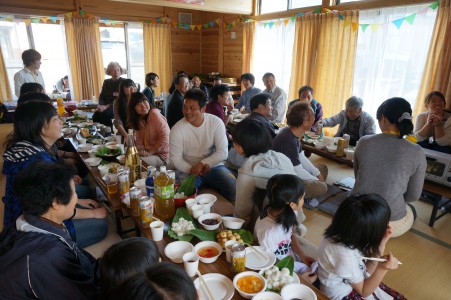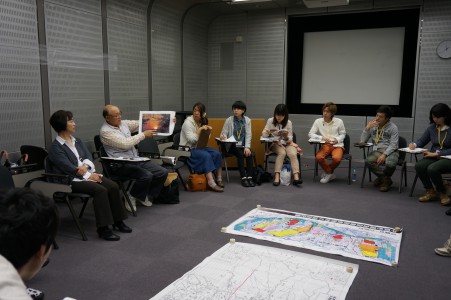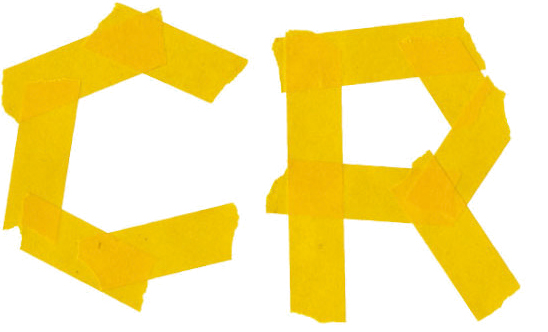Last week, on the 21st, ”Kamado (cooking range) Day” event was carried out at Tsuchida-san’s house.
The weather was a major concern of the day, but luckily, it did not rain!
At the ”Kamado (cooking range) Day” this year, a workshop to make curry with high school and elementary school students and a “Talk Café”, organized by the Vacant Properties Team, to talk about the future of Hojo were held. Four high school students and 3 elementary school students came and took part.
What was different from the previous workshops was that we did a rehearsal with the high school students so that they would know how to use the Kamado (cooking range) and how to cook the curry and would be able to instruct the elementary school students on the actual day. At the event, the elementary school students were very lively and the high school students, in their position as instructor and feeling the responsibility, looked confident.
Two kinds of curry, one for the adults and one for the children, were made, and they were both very tasty!
At the “Talk Café”, organized by the Vacant Properties Team, together with the parents of the elementary school children that took part, we discussed about Hojo while eating pancakes made of rice flour. Everybody spoke actively and willingly and we heard some surprising stories. It was time very well-spent! (Machinaga, 3rd Year at School of Art & Design)
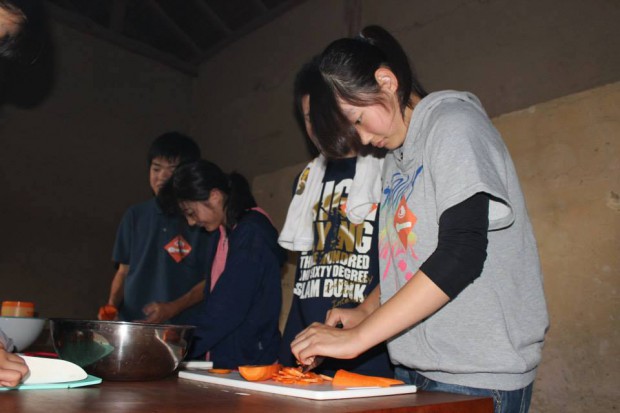
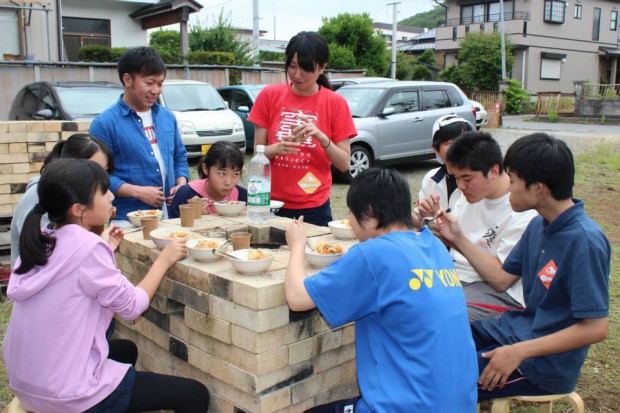
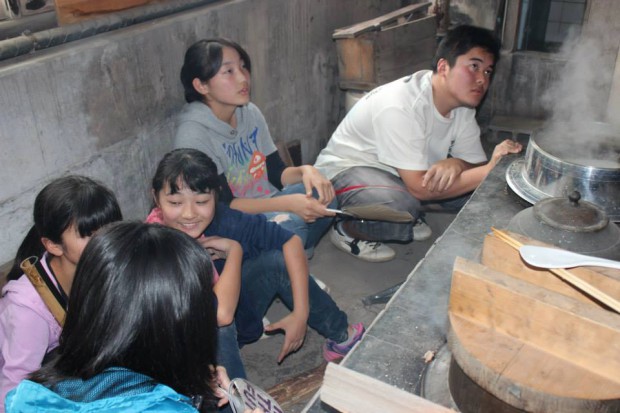
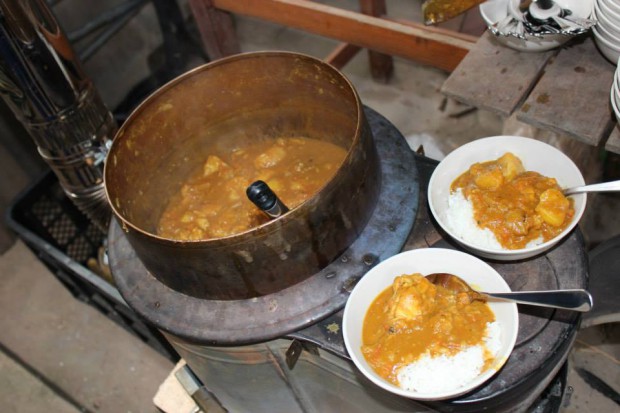
Category Archives: Vision Formulation assignments
Vacant Properties Team holds “Talk Café”
On June 21, the Vacant Properties Team held the “Talk Café”. The “Talk Café” is an event, held in a workshop format, to talk about the good points and issues of Hojo with the local people, so that ideas to utilize vacant houses and properties in Hojo might be inspired.
Since it was held together with the Kamado Project’s ”Kamado (cooking range) Day”, many people taking part in the ”Kamado (cooking range) Day” also came to our event. From elementary to high school students as well as adults, a wide range of age groups took part in exchanging ideas in a friendly atmosphere. Not only did we present our proposals, but we also had the participants offer ideas and suggestions, resulting in lively dialogs and discussions. It turned out to be a very good workshop that would positively lead to our future activities.
Above all, it was such a pleasure to have mingled with the locals of Hojo. We were glad that the rice flour pancakes that we had prepared were well received by the children.
Members of the Kamado Project and those who took part in the “Talk Café”, thank you very much! (Muranaka, 4th year at College of Policy and Planning Sciences)
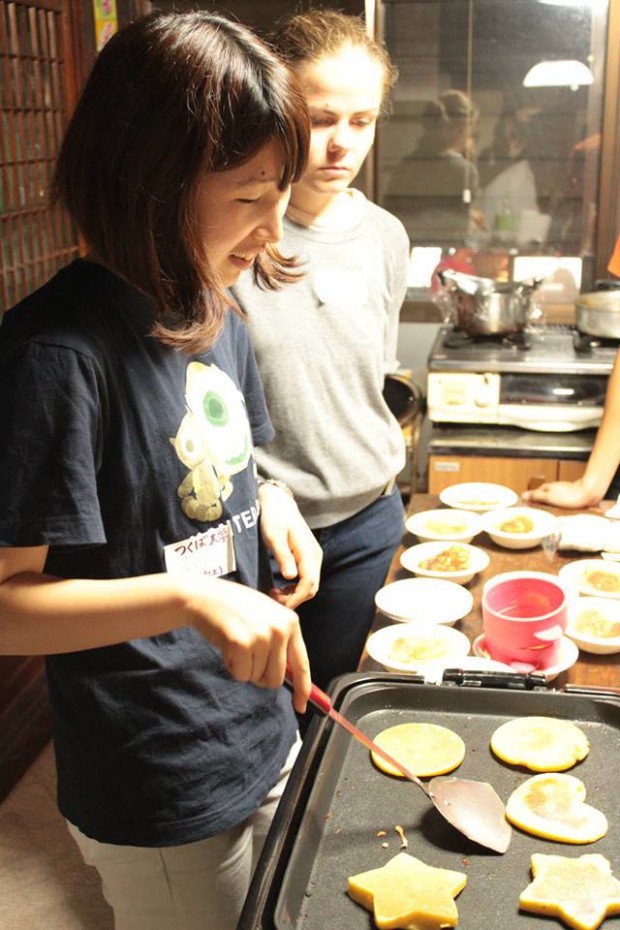
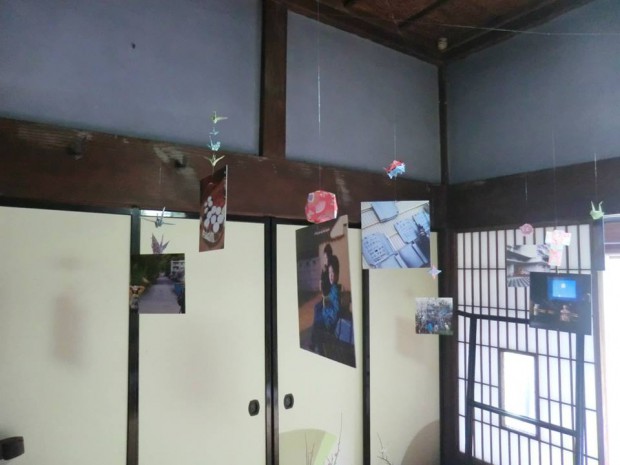
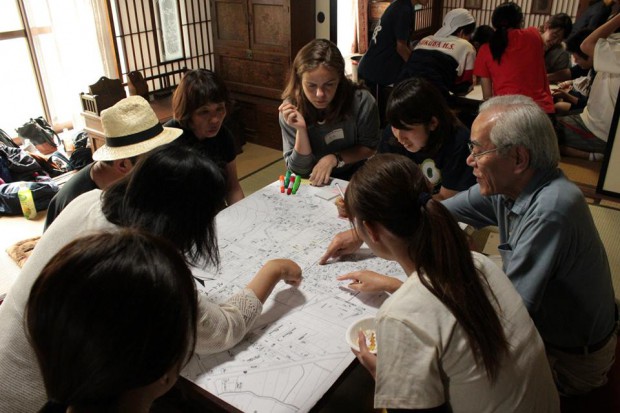
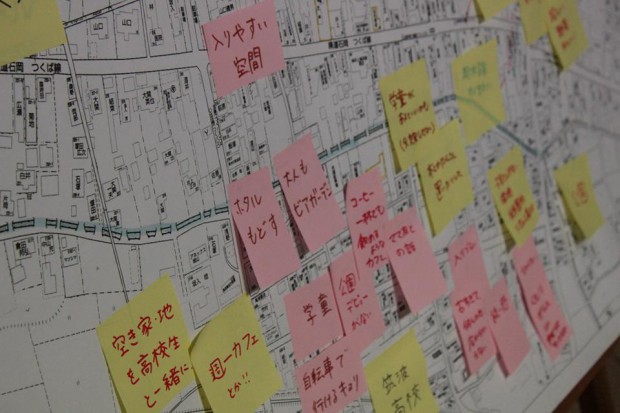
Yui Team: Research Done for the Next Workshop (WS)
This year, the Yui Team started off with 10 members. In preparation for this year’s WS, we began by doing research on collecting thoughts and comments from the participants of the “Yui’s Pottery Project” last year and the year before last.
As we now have more people, we split up into 2 teams and visited some of the participants’ homes, telephoned those that had moved out of Tsukuba, or had them come over to the university during the CR classes. We conducted our research and also enjoyed talking to them. While we were glad to hear that the participants enjoyed the WS last year and the year before last, some said that they would have rather made the dishes with someone they knew than they didn’t and giving the dishes away as a gift was a burden. Hearing directly these various opinions led us to feel the need to make improvements. At the same time, as 4 years have passed since the catastrophic earthquake, we found out that there have been changes or added complications in their individual lives and circumstances.
Along with the research, the members of the Yui Team actually carried out the “Yui’s Pottery” WS as a trial. Because we are a newly formed team, we were at first a little tense, but through the WS, we got the conversation going and had a good time making the Yui’s pottery.
As a result, we have decided on the new theme, which is “Creating a soft atmosphere — A dish that can’t be made alone.” We would like to continue discussing and decide on actual dates and details of the WS and how we would go about publicizing it. (Yoshida, 2nd Year at College of Agro-Biological Resource Science)
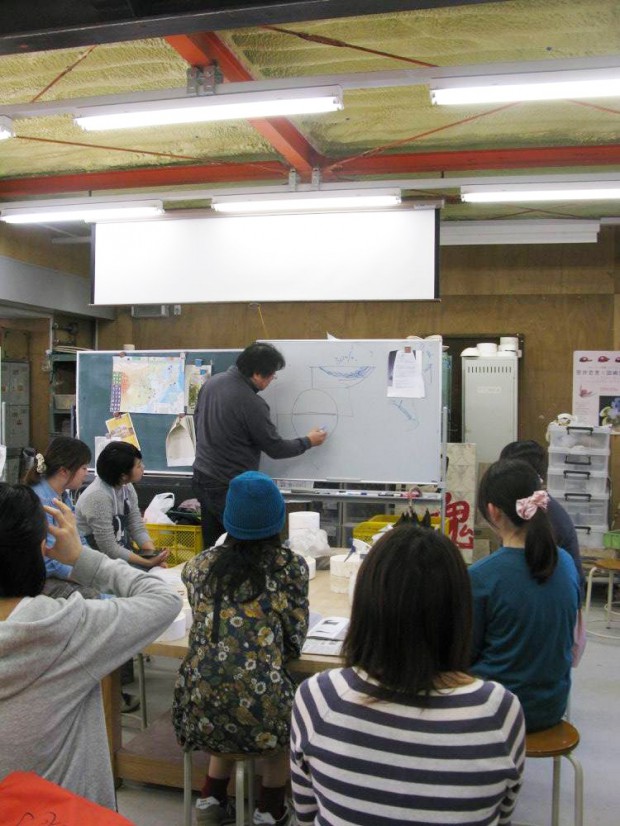
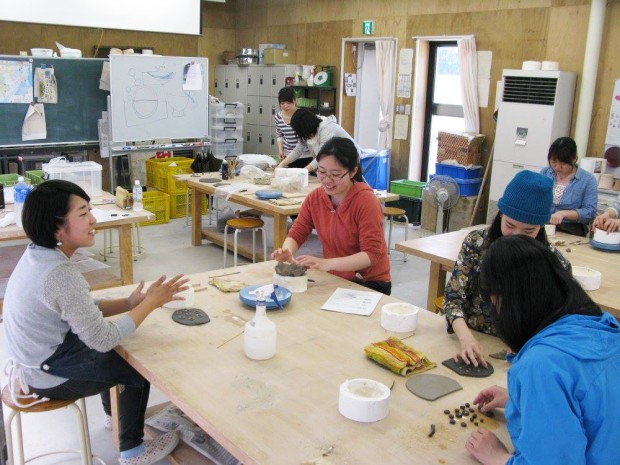
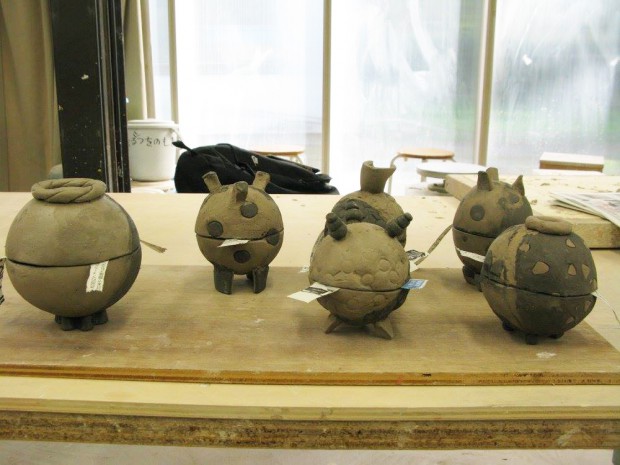

Vacant Properties Team Visits “Toride Art Project (TAP)”
On May 15, the Vacant Properties Team went on a study-tour to see the “Toride Art Project (TAP)”. TAP, which started in 1999, is a project carried out in collaboration among 3 parties, the citizens and the city government of Toride and Tokyo National University of Fine Arts and Music, using the city of Toride as a field. The city of Toride is attempting to become a city of art, and the project is attracting attention as a project that is employing “art” for town-development. We asked to conduct the tour to study as a reference case for the Vacant Properties Team’s project to make use of vacant homes and properties in Hojo. It was very interesting and meaningful, since the staff showed us its activity to revive a vacant house with art and let us see other cases, too.
With the inspiration acquired during this tour in our hearts, we would like to continue our activities.
(Muranaka, 4th Year at College of Policy and Planning Sciences)
Toride Art Project (TAP) Website
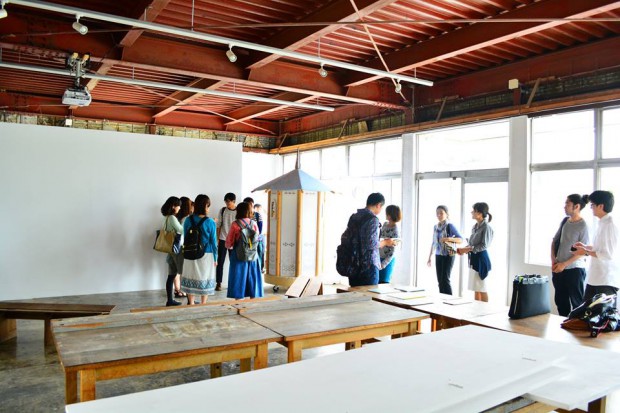
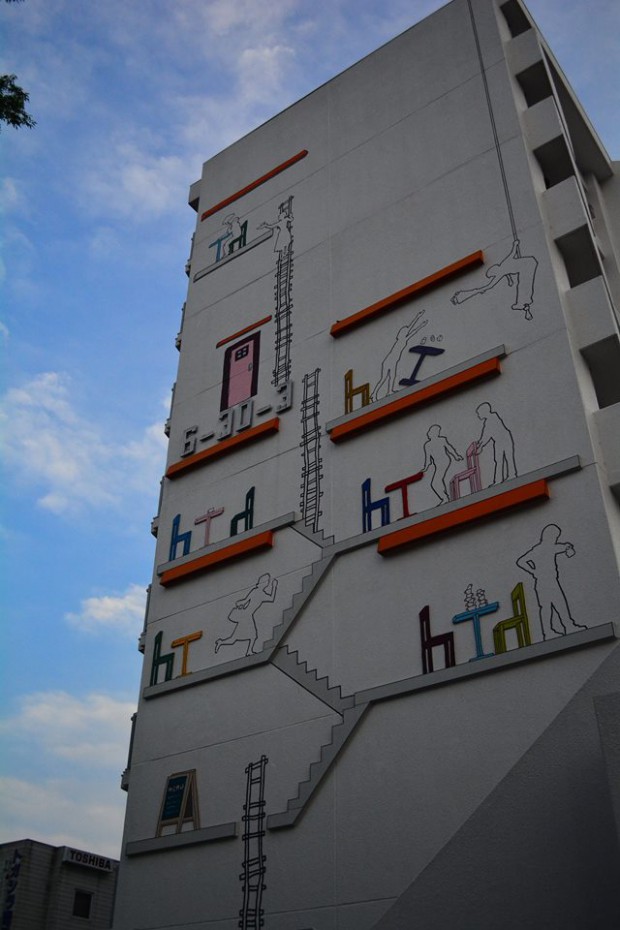
Kamado Project takes part in “Reconstruction: Hojo Spring Market”
On May 6, the Kamado Project took part in “Reconstruction: Hojo Spring Market”. It has been 3 years since the tornado hit the city. The weather turned out to be nice and more people came out than last year.
This year, we conducted a workshop to cook rice on the kamado (Cooking stove) with the students of Hojo Elementary School and Tsukuba High School, and we also sold chimaki onigiri (Bamboo wrapped rice balls), which were cooked on the kamado.
Six elementary school and 5 high school students participated in the workshop. The elementary school pupils were very excited to see a kamado for the first time and had fun starting the fire. Local people also took part on the spot, and some delicious rice was cooked as everyone smiled and had a good time around the kamado. The chimaki was all sold out, and it turned out to be a fulfilling day, and, hopefully, people became more familiar with the kamado. (Touda, 3rd Year at School of Art & Design)
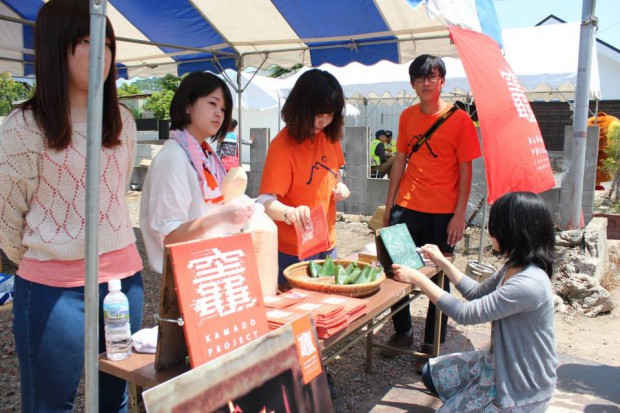
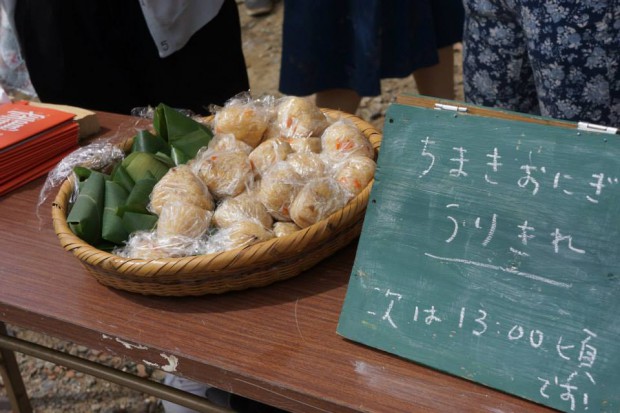
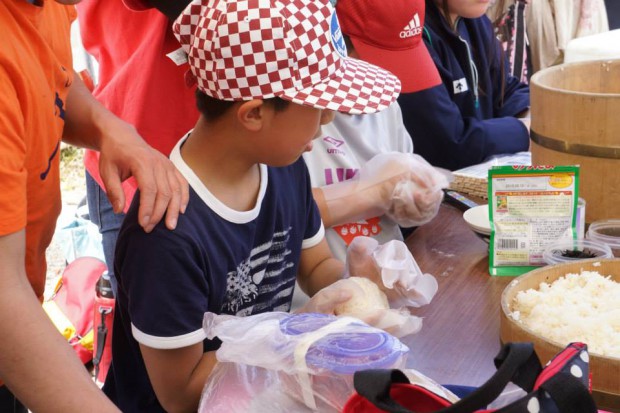

Okuma-machi Team, Aizu Research
On June 13, we visited the North Emergency Temporary Housing of Johoku Elementary School for the second time this year. The objective was to do a presentation of a plan to hold a “Summer Festival” for the people living in the temporary housing, and to exchange ideas and opinions with them. This time, we wanted the people of the temporary housing to not just come as visitors, but to take part in and enjoy the planning and organizing stages of the summer festival as well. We asked for their cooperation in organizing the stalls, decorations and creating publications. Because of the open and friendly attitude of the people in the temporary housing, the discussion was carried out in a pleasant atmosphere filled with laughter. However, at the same time, many things were pointed out and much advice given to us, and in a positive sense, we felt the gaps between the thinking and sensibilities of the Johoku district people and us. We became aware of the fact that the key to the success of the “Summer Festival” lies in narrowing the gaps. They also offered some interesting ideas that we would never have thought of, making the meeting extremely significant and worthwhile. On a personal note, I was very touched by what the children, who drop by on their way back from school, said; “Looking forward to the festival! I’m coming in my yukata! (Japanese summer kimono)”. My wish to produce the best summer festival where everyone can have fun has become even stronger.
We would like to put the feedback from this meeting into good use and, through the exchanges with the people of the Johoku district, continue with our efforts, while not forgetting that one of the major themes of the summer festival is “To Create and Enjoy the Festival Together”. (Akio Suzuki, College of Social Sciences)


[Preview] Creative Reconstruction: Vision Formulation 1, 8th Session
For the Creative Reconstruction: Vision Formulation 1, 8th Session, the author, Maha Harada, will be invited to give a talk titled, “Overcoming Hardship: The Mission of Art and Literature in Extreme Conditions”. Please come, as anyone is welcome to attend.
[Lecture]
Venue: Tsukuba University, Bldg.6A Rm.208
Date & Time: Jun. 13, Friday, 12:15 – 13:30
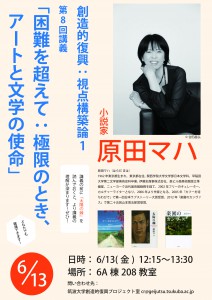
Itako Team Tour
On May 23, the entire Itako Team went on a tour of the Itako-shi area. The Hinode area in Itako-shi is where massive damages were caused by liquefaction due to the Great East Japan Earthquake. Even though 3 years have passed since the earthquake, there are still roads that have not been repaired. Compared to last year, not much change could be detected in the parts that have been properly paved and that are still under works. Seeing firsthand of the situation made us realize the enormity of the damages that were hardly reported. (Top photo)
We also visited a temple called Suiunzan Choonji and met with the monk, Hashimoto-san, and asked him to tell us about the Hinode area. (Bottom photo) The most memorable words he mentioned were that the recovery of the kindergartens would lead to the protection of the town. Since Itako-shi is a new town, many of the parents’ generation come from other parts of the country, whereas for the children born here in Itako-shi, Itako will be their hometown and they might grow up to be in charge of developing the future of the town. Activities of Jibo Kindergarten, which Choonji runs, were introduced to us and we were impressed by its positive and constructive attitude. Once again, I vowed to give support to the region. (Yamazaki, 3rd Year at School of Art & Design)
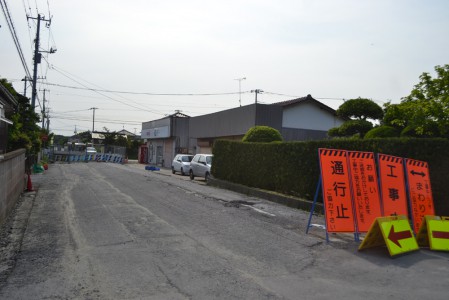
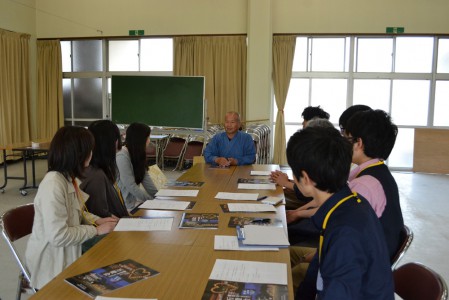
Kotonoha Team, Minami-Soma Tour
Because of the code sharing with the College of Comparative Culture that started this year, the “Kotonoha Team” has been created. Applying the properties of its specialty, activities focused on “words” are being planned. As a start, we decided to visit the site and went on a tour of Minami-Soma City in Fukushima on May 10 and 11. (14 students, 4 instructors) The first day, we visited the Koike Naganuma Nishi Emergency Temporary Housing, where residents of the Odaka district, who suffered damages from both the tsunami and radiation, live.
Minoru Matsumoto, Chief of the Odaka District Regional Development Division spoke to us about the damages and the reconstruction plans, and Shinichiro Raku, President of the Community Association, about the life at the temporary housing and its problems with reference to actual examples. Since the damages in the Odaka district are not the same across the board, we listened to stories by the evacuees from the eastern region, western region and central region. In the evening, we visited the home of Mikako Takahashi, President of Hokuyosha Cleaning, Japan, and a supporter of “Tsunagaro Minami-Soma”. She showed us some valuable video footage and told us about how she was among the first to reopen her cleaning business after the disastrous earthquake. The second day, we toured the Odaka district with Matsumoto-san, guided by Fumitoshi Kanazawa, Chief Curator of the Fukushima Museum. This is an area preparing for the lifting of the evacuation directive, and although a return in 2 years has been decided, the conditions are still as can be seen in the photograph. It was heart wrenching for us, too, to see the sad looks on Raku-san, Tamagawa-san and Inamura-san, who had come with us from the temporary housing. We also visited Rikuzenhama-kaido, Soma Odaka Shrine, Kashima Fukko Shopping Center and Michinoku Kashima Baseball Stadium. It was a two-day visit in which we felt we had learned things that we could never have known just by reading about them. (Takahashi)

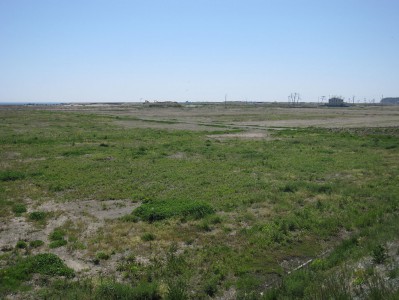
Okuma-machi Team, Aizu Research
On May 10 and 11, we visited the North Emergency Temporary Housing of Johoku Elementary School in Aizu-Wakamatsu-city, where people from Okuma-cho have evacuated and are currently living. This activity is now entering its 3rd year. Together with the residents of the temporary housing, we made shiratama-dango and discussed plans for this year’s Summer Festival. It turned out to be a productive research carried out in a lively atmosphere.
The next day, we visited the Fukushima Museum and spoke to Ms. Shoji and Mr. Kamata, who had evacuated from Okuma-cho and are working in Aizu and Sukagawa. Curators of the museum, Mr. Kawanobe and Ms. Kobayashi, who are also supporters of CR, spoke about the many activities in Fukushima as well. It was a very informative and significant two days, as we were able to hear directly from many people.
(Akagi)
